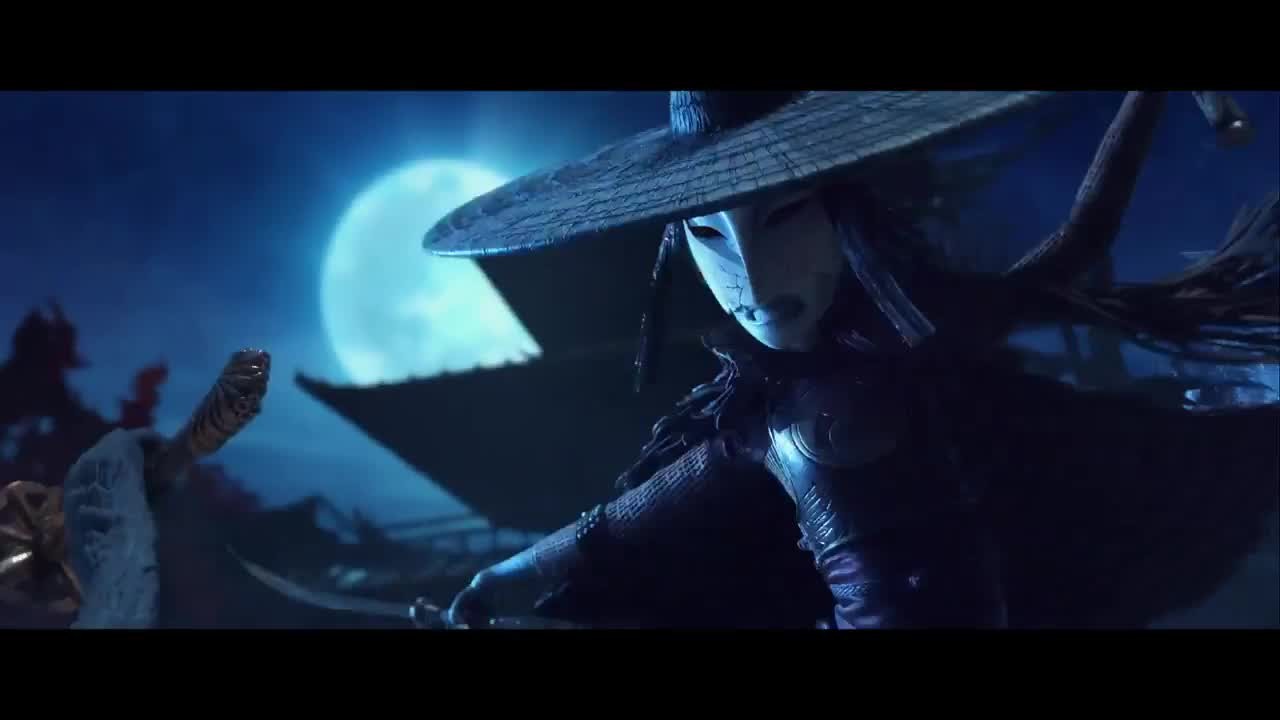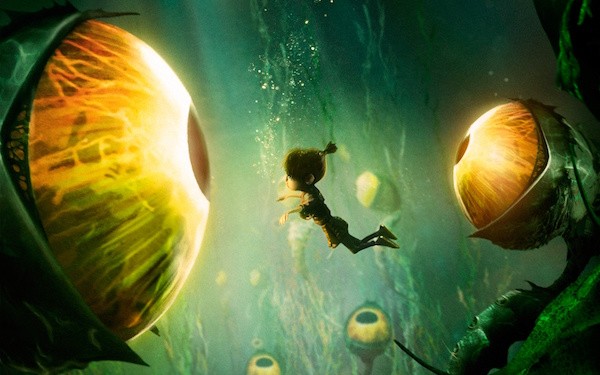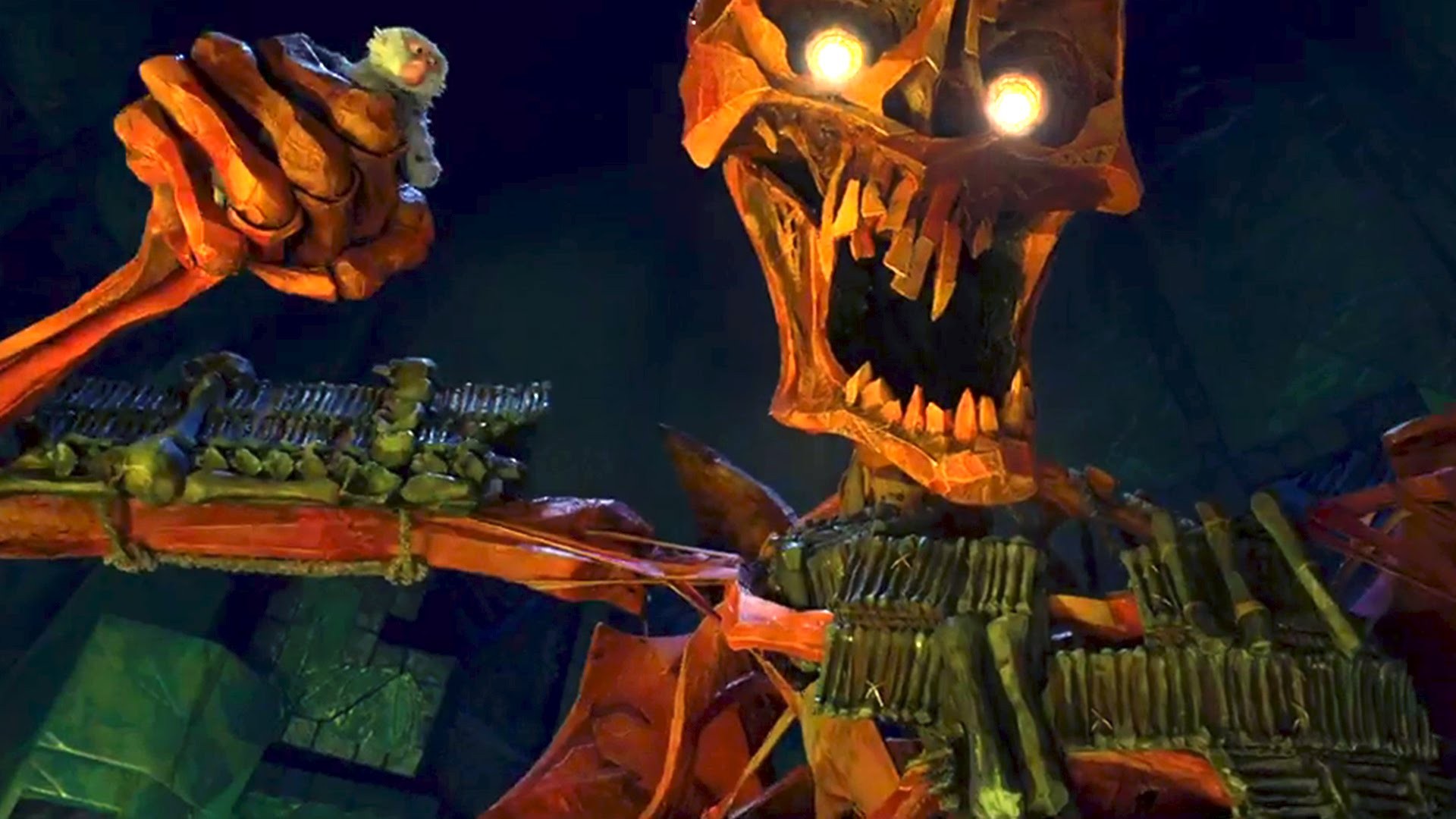Kubo And The Two Strings starts out with a moment of quiet bravado: “If you must blink, do it now.”
The voice, we will soon learn, belongs to our hero Kubo (Art Parkinson, aka the youngest Stark on Game Of Thrones), and “If you must blink…” is the beginning of his carny pitch. But it also doubles as a manifesto for one of the most visually sumptuous films of the year.

11 years before, the infant Kubo washed up on a beach with his mother; now, he earns money to support her as a street performer. With his magic shamisen (a three-stringed, Japanese musical instrument), he can bring origami figures to life and use them to bring tales of derring-do to life for the curious villagers. The star of his stories is a paper samurai named Hanzo, modeled after the boy’s missing father.

Already it’s easy to see the mythic resonances in Kubo’s story: Perseus also survived abandonment at sea, and later learned he was demigod, son of Zeus and the mortal Danae. Kubo’s father Hanzo was mortal, but his mother was the most powerful of three daughters of Raiden the Moon King (voiced by Ralph Fienes).
You might think this curious, because Perseus was Greek, and the world where Kubo lives is undoubtedly a stylized version of feudal Japan. The mixing of East and West continues through the story, a largely by-the-book Hero’s Journey sprinkled liberally with concepts from Shinto and Japanese folklore. It’s the mark of a team of young filmmakers, led by Travis Knight, who have clearly grown up steeped in manga, anime, and Studio Ghibli.
Instead of hailing from Tokyo, Knight’s animation studio Laika is based in Portland, Oregon, and Knight’s father Philip is the co-founder of Nike. Laika is the studio behind great-looking stop motion films such as Coraline, but this is CEO Travis’ first credit as director, which might lead the more cynical among us to dismiss Kubo as a rich guy’s vanity project—or a shot across the bow of the Disney battleship.

Kubo is thrust into adventure when he inadvertently exposes his whereabouts to his evil aunties, a pair of black-clad twins chillingly voiced by Rooney Mara. Kubo’s grandfather stole one of his eyes when he was an infant, and now the Moon King wants the other one. Kubo’s questing companions include the wise Monkey, voiced with incredible precision by Charlize Theron, and the rather thick Beetle, a perfectly cast Matthew McConaughey.
The real star of the show is the seamless blend of advanced stop motion animation and CGI, which Laika use to create stunning, hyperreal images, such as an underwater garden of malign, staring eyes, and a boat made of orange fall leaves.
When he leaves the familiar environs of his village, Kubo awakens in a featureless, snowy landscape. There’s no shortage of eye-popping set pieces in the film, but this little moment of visual restraint stuck out as proof that Laika’s head is in the right place. A lesser film would have been afraid to bore its audience by going blank, but Knight and company let the landscape’s lack of landmarks reflect their hero’s psychic dislocation. Kubo’s visuals are not just knockout gorgeous, they’re always in service of character and story.

How has Laika succeeded where so many other have failed this year? There are four credited writers, none of whom are the director, which means it was not the vision of a single auteur, but the product of a healthy collaborative process.
This is the model of contemporary corporate filmmaking that has recently seen so many specularly expensive failures. A plucky little studio, both geographically and spiritually removed from the Hollywood sausage factory, has beat the majors at their own game, and they’ve done it for a fraction of the cost.
The dog days of August is when Hollywood traditionally dumps the losers from their summer line ups, but with Kubo and the Two Strings, they’ve saved the best for last.